The Real Deal on Hanging Plants for Dark Corners (That Actually Survive)
I’ve spent a long time helping people green up their homes, and one of the most common things I hear is, “I’d love a plant here, but I have a black thumb. Everything dies.” People point to a dim corner, convinced it’s a plant graveyard because they don’t have those big, sunny windows you see in magazines.
In this article
Honestly, it’s almost never a “black thumb.” It’s usually just a case of picking the wrong plant for the job. The secret isn’t some miracle fertilizer or a complicated watering schedule. It’s about knowing what “low light” really means for a plant and then choosing one that’s built to handle it.
Hanging plants are a fantastic trick, by the way. They pull the eye upward, making a room feel bigger, and they add that pop of life without cluttering up your floor. But hanging a plant also means it’s a bit more exposed—it can dry out faster and is a pain to check on. So, this guide is all about the practical, real-world stuff I’ve learned over the years. We’ll figure out your light situation, pick a plant that won’t give up on you, and cover the pro techniques to keep it looking great.
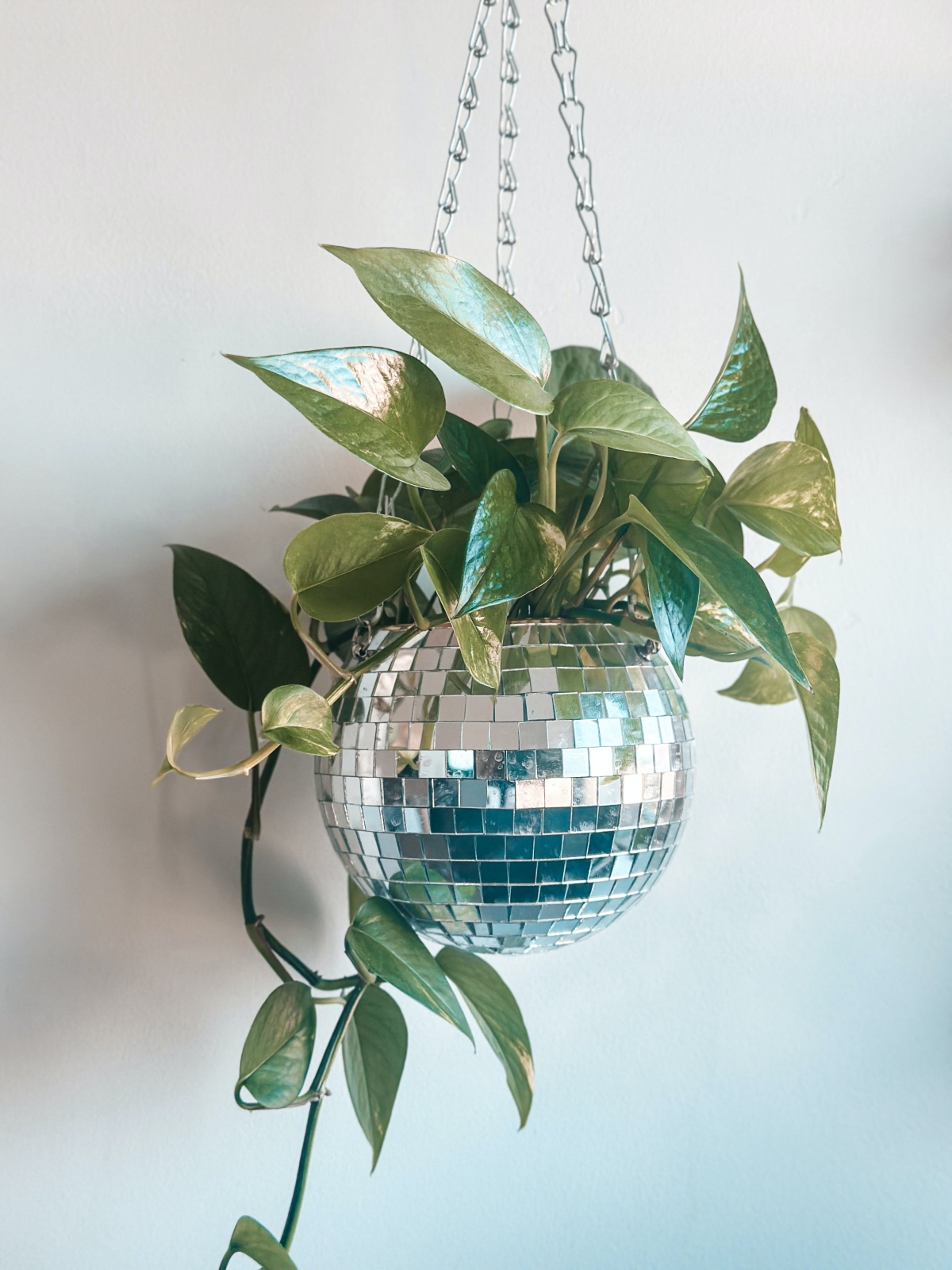
First, Let’s Talk About “Low Light”
To get this right, you have to think like a plant for a second. Plants eat light through a process called photosynthesis. Not enough light, and they’re essentially starving. But some brilliant plants evolved to live on the floor of dense rainforests, getting only the dappled light that makes it through the canopy. These are our indoor heroes.
You can often spot them by their looks. Many have large, dark green leaves. The big surface area acts like a giant solar panel, trying to soak up every last drop of light. That deep, rich green color? It’s often from having extra chlorophyll, the stuff that helps them capture the specific kind of light found in shady spots.
So, What’s “Low Light” in a House?
Let’s be clear: low light doesn’t mean a windowless bathroom. No plant (none, zilch, zero) can live in total darkness. In my world, we sometimes measure light in foot-candles, but you don’t need a fancy meter. Here’s a more human way to judge your space:
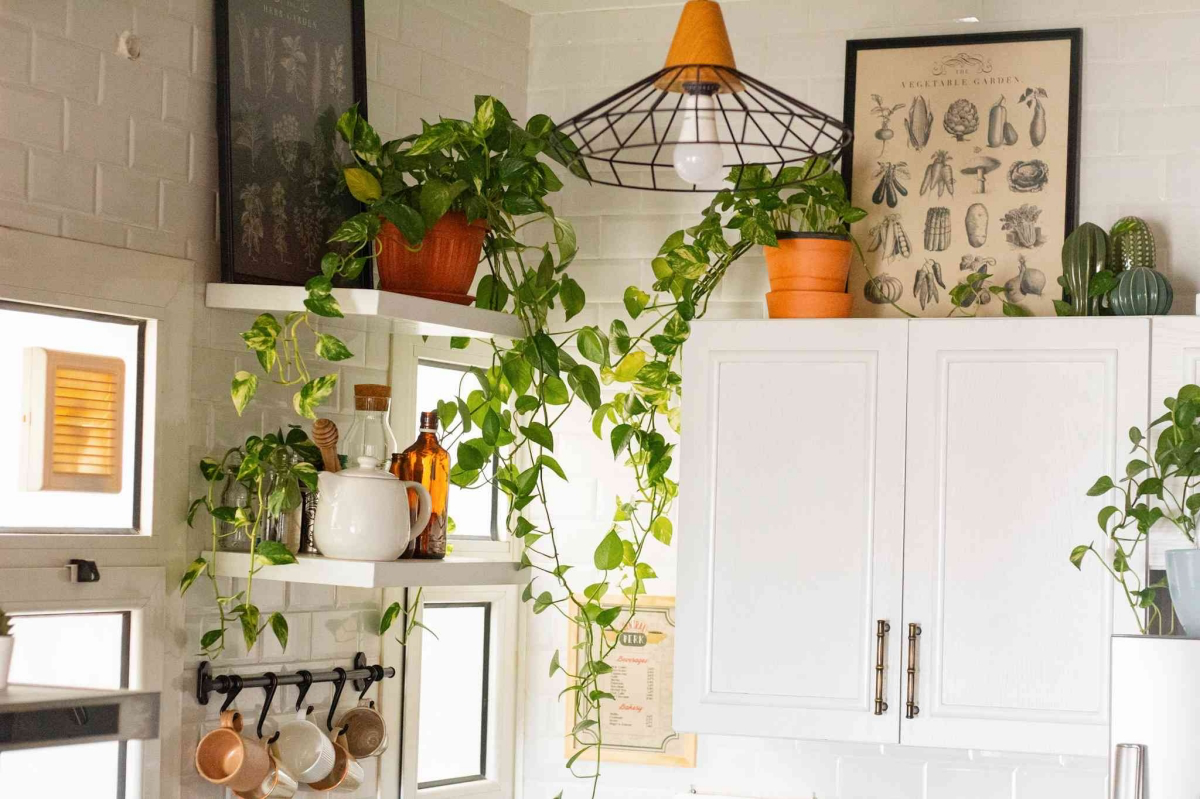
- Low Light: This is the spot more than 8 feet away from a bright window, or maybe a room that only has a north-facing window. You can easily read a book there during the day, but your shadow would be soft and fuzzy. Think hallways that get borrowed light from other rooms or the corner of your living room that never gets direct sun.
- Medium Light: This is prime real estate. It’s usually within 4 to 8 feet of a bright window or right in front of an east-facing one. It’s bright all day, but the sun isn’t beating down on it.
- High Light: This is the sun-blasted zone right in front of an unobstructed south or west-facing window.
A quick tip: Try the hand-shadow test. Hold your hand about a foot over a piece of white paper. If the shadow is faint with blurry edges, you’ve got low light. If it’s sharp and defined, you’re in medium-to-high territory. Nailing this down is the single most important first step.
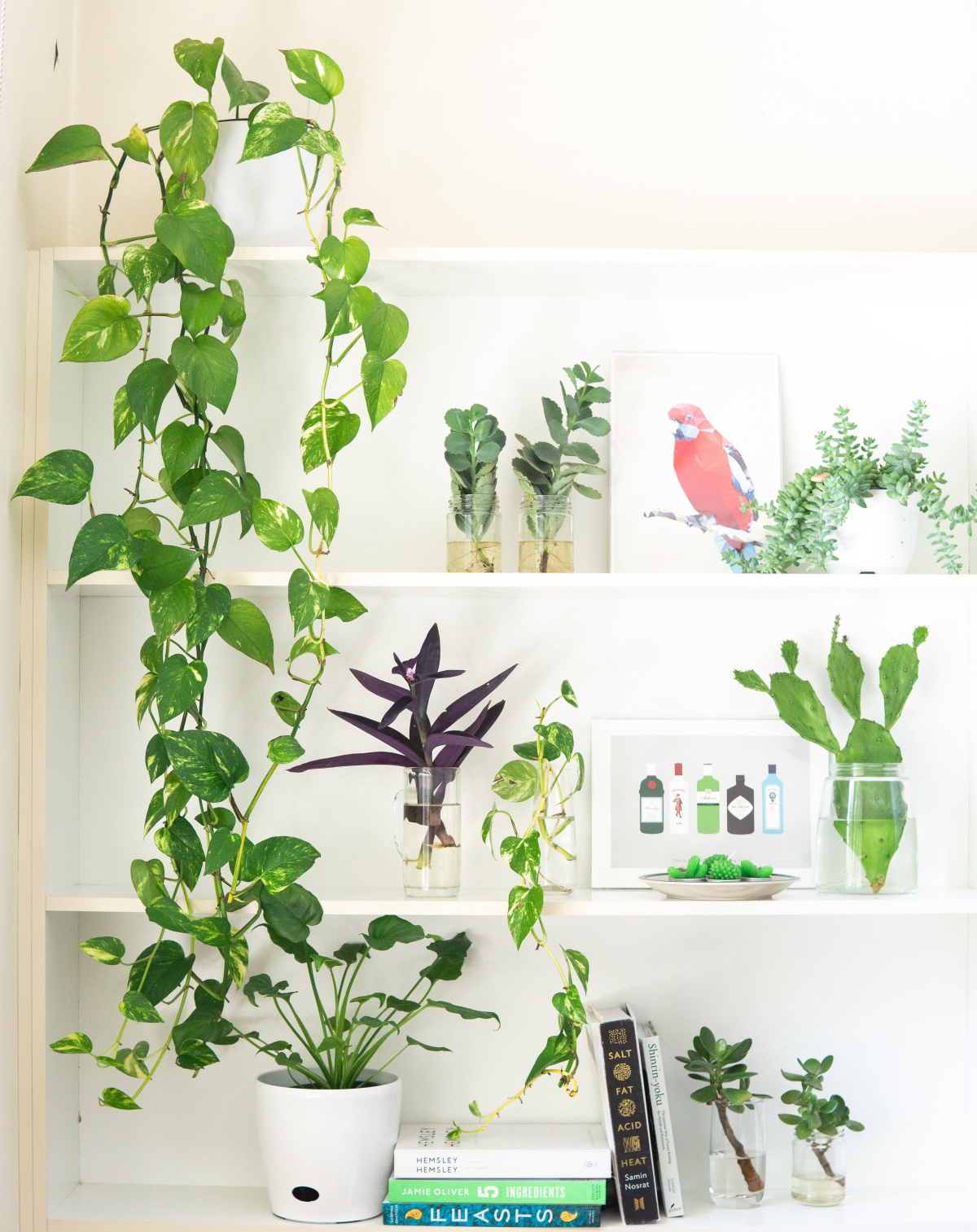
The Toughest Hanging Plants for Dim Spots
Alright, let’s get to the good stuff. These are my go-to plants that I’ve used in countless low-light projects. They’re reliable, tough, and beautiful if you give them what they need.
1. Pothos (The Indestructible Vine)
Pothos is the absolute workhorse of the indoor plant world. I’ve put these in dim office cubicles, dark living room corners, you name it. Its best quality is that it clearly tells you what it needs—droopy leaves mean it’s thirsty; yellow leaves usually mean you’re watering too much.
- Best Bet for Low Light: Stick with the classic Golden Pothos or the solid-green Jade Pothos. The fancier ones with lots of white, like a ‘Marble Queen’, need more light to keep their patterns and might turn mostly green in a dark spot.
- How to Water It Right: Pothos absolutely HATES sitting in soggy soil. It’s the #1 way people kill them. In low light, the soil dries out very slowly, so you have to be patient. I tell my clients to let the top two inches of soil go completely dry. A simple wooden chopstick is your best friend here. Shove it a few inches into the soil. If it comes out with moist dirt clinging to it, wait. If it’s clean and dry, it’s time to water.
- Price Check: Expect to pay around $15-$25 for a nice, full 6-inch Pothos at a local nursery or a big-box store like Home Depot.
- Heads up! Pothos is toxic to cats and dogs if they chew on it, so hang it high and out of reach of curious paws and little hands.
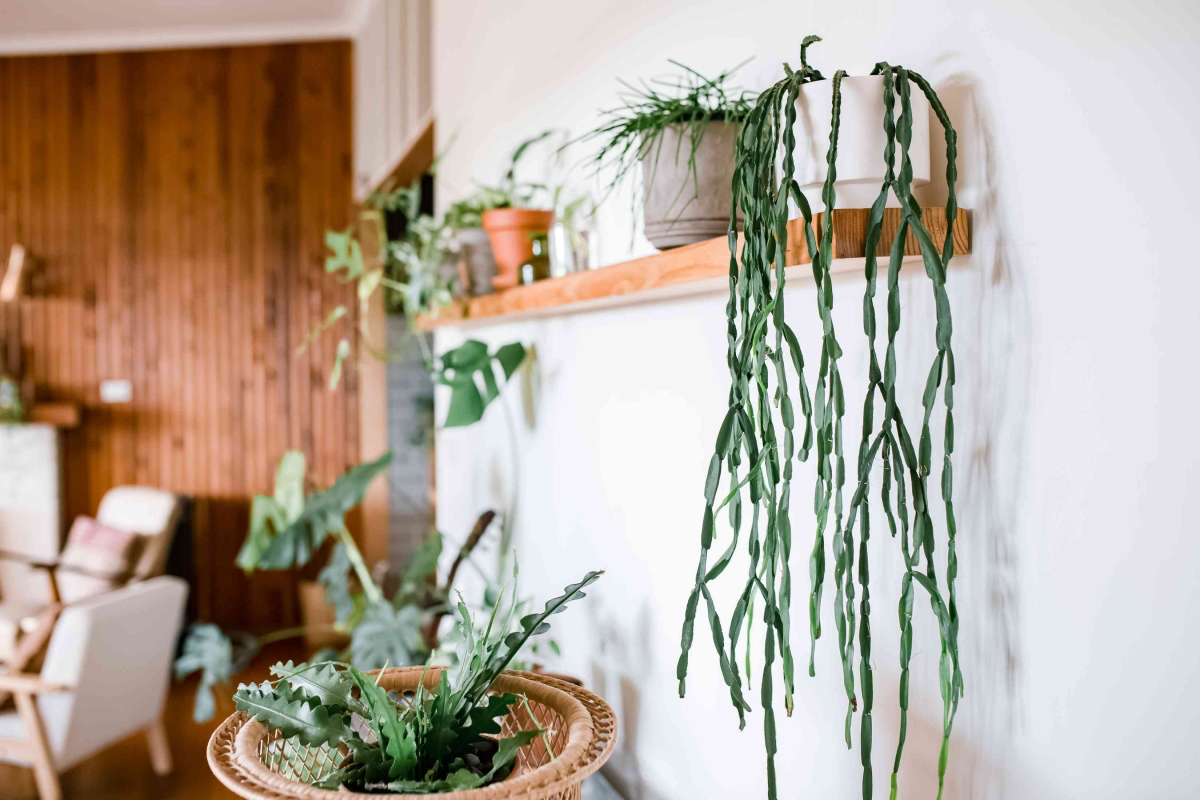
2. Heartleaf Philodendron (The Graceful Cousin)
Often confused with Pothos, the Heartleaf Philodendron is another all-star. Its leaves are a bit softer and more distinctly heart-shaped. Personally, I think it has a more elegant, delicate drape to it. It’s just as forgiving and will also wilt dramatically when it’s thirsty.
- Care Routine: It’s nearly identical to Pothos. It needs to dry out, is prone to root rot if you overdo it, and loves a well-draining soil. From my experience, it might be slightly less drought-tolerant than Pothos, so its leaves wilt a bit faster.
- Pro Tip for a Fuller Plant: To stop it from getting that “leggy” look (long, sad vines with few leaves), you have to prune it. Just pinch back the tips of the vines right after a leaf. This forces the plant to branch out, creating a much bushier, more lush look. Bonus: you can stick the cuttings in a jar of water and they’ll root in a few weeks, giving you new plants for free!
- Heads up! Like its cousin, this Philodendron is also toxic to pets.
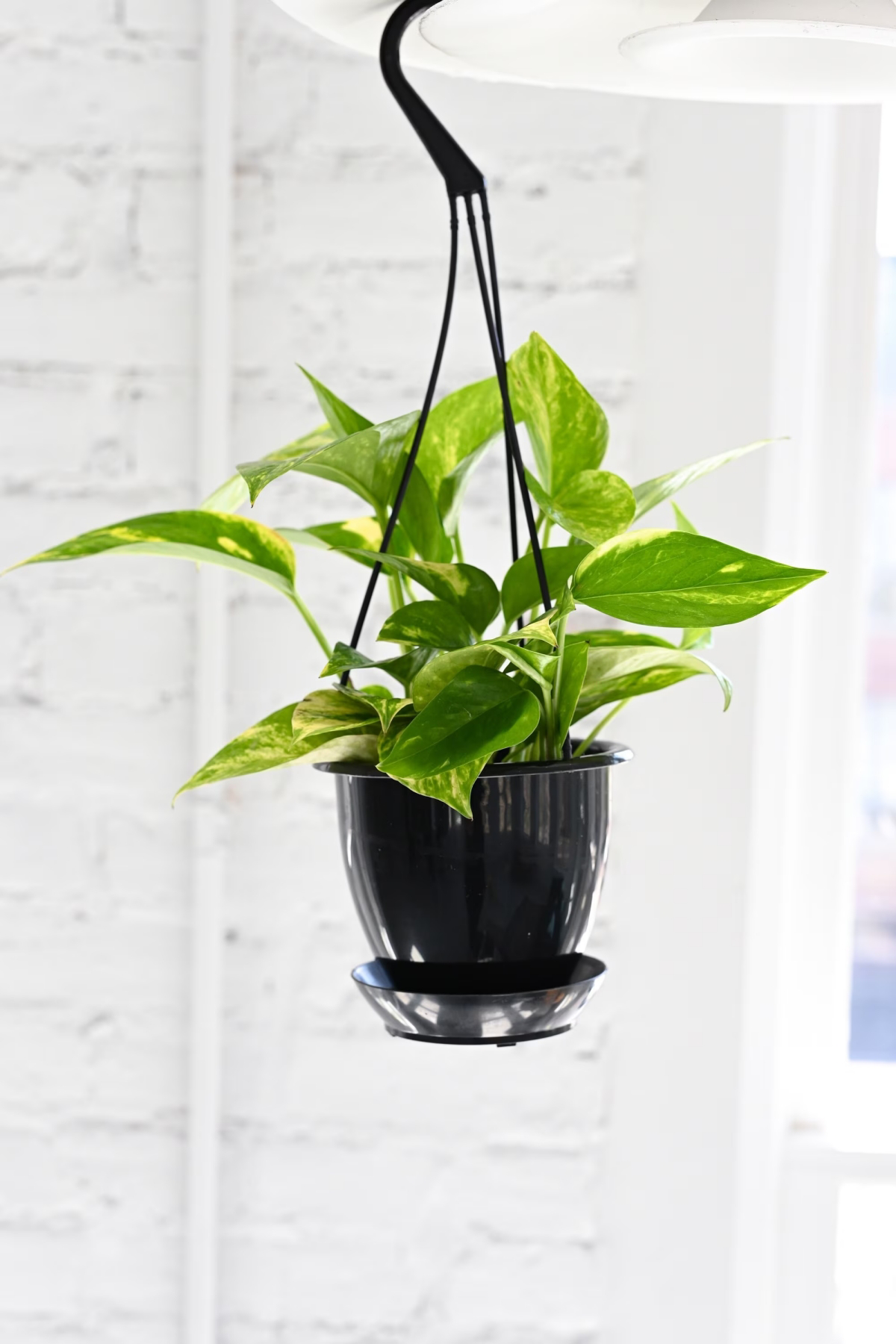
3. Spider Plant (The Retro Classic)
There’s a reason spider plants are timeless. They’re tough, they have a cool, arching shape, and they make little baby “spiderettes” that are fun to propagate. They tolerate low light, though they won’t grow as fast or produce as many babies as they would in a brighter spot.
- Solving the Crispy Brown Tips: I get this question all the time. It’s almost never about humidity. It’s usually a sensitivity to the fluoride and salts in tap water. The fix? Switch to distilled water, collect some rainwater, or just let your tap water sit out uncovered for at least 24 hours before using it. I’ve seen this solve the problem completely.
- Pet-Friendly Pick: Good news! Spider plants are non-toxic, making them a much safer choice if you have pets that might nibble on a fallen leaf.
4. ZZ Plant (The Unkillable One)
Okay, it’s not a classic vining plant, but its thick, arching stems look incredible in a sturdy hanging basket, especially in a modern space. The ZZ is famous for thriving on neglect. It has these big potato-like things under the soil called rhizomes that store water, making it insanely drought-tolerant.

- The Only Way to Kill It: Overwatering. I’m not kidding. In a dim corner, a ZZ might only need a sip of water once a month, maybe even less in winter. The soil needs to be bone-dry all the way through before you even think about watering it.
- Weight Warning: Because of those water-storing rhizomes, a mature ZZ plant is HEAVY. If you’re going to hang one, you absolutely must use a heavy-duty hook screwed directly into a ceiling joist, not just the drywall. More on that later.
- Heads up! The ZZ Plant is toxic if ingested, and its sap can irritate the skin. I usually pop on a pair of gloves when I’m pruning or repotting one.
5. Boston Fern (The High-Maintenance Beauty)
Nothing gives you that lush, feathery texture like a fern. But I’ll be honest, the Boston Fern is the diva of this list. It is NOT a plant you can forget about. It demands high humidity and soil that stays consistently moist. It’s a rough choice for a dry climate unless you’re truly committed.
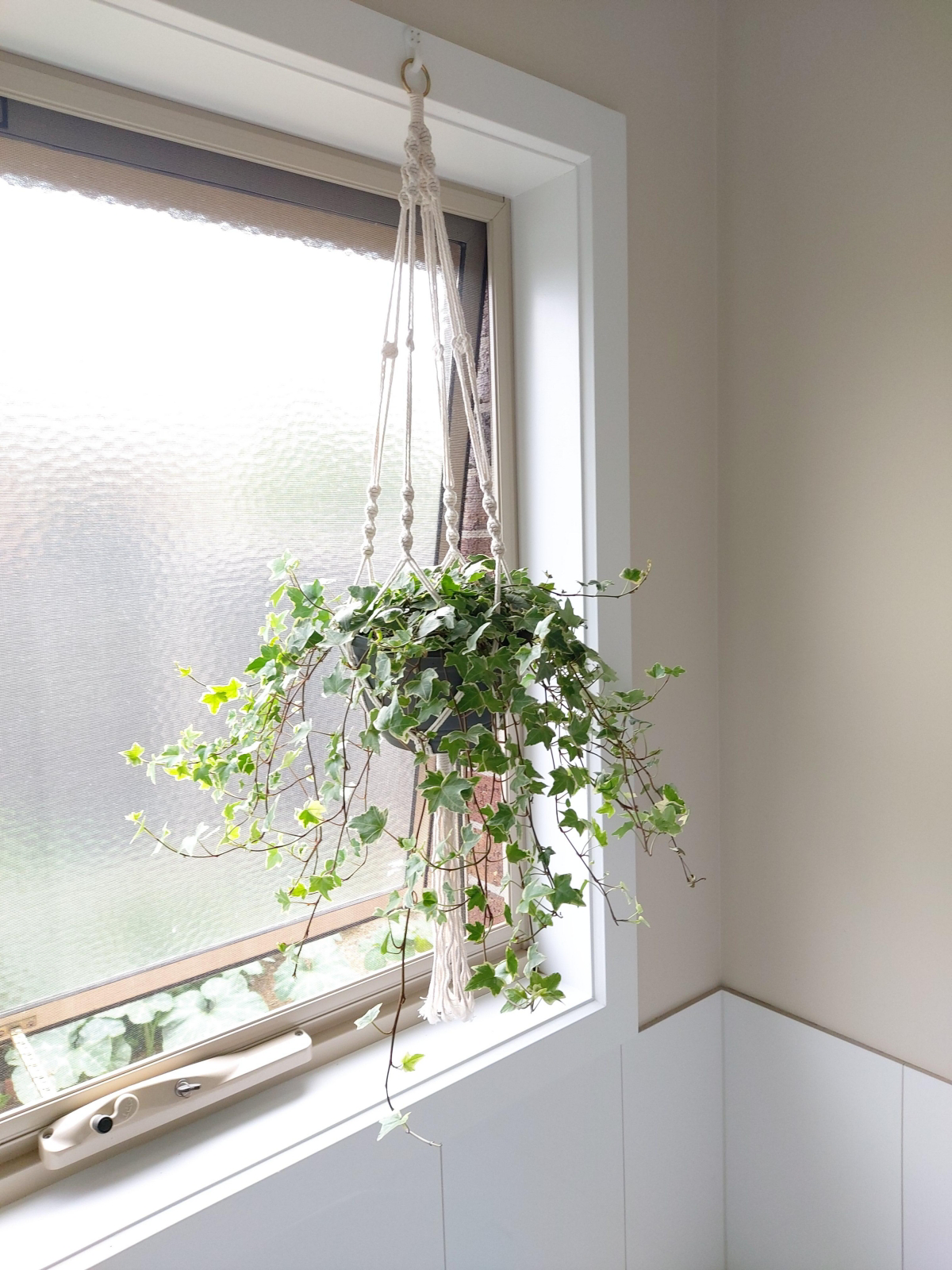
- Humidity is Everything: Ferns are happiest in bathrooms or kitchens. To make it work in a living room, you’ll probably need to run a small humidifier nearby. Another trick is a pebble tray: just a shallow tray filled with pebbles and water. You set the pot on top of the pebbles (not in the water!), and as the water evaporates, it creates a nice little humid microclimate.
- The Mess Factor: Be prepared for shedding. It’s perfectly normal for ferns to drop little leaflets. It’s the price you pay for their beauty. Just try not to hang them directly over your white sofa.
How the Pros Keep Hanging Plants Alive
Caring for a hanging plant is a bit different. You can’t just peek at the soil easily. Here are the methods that I swear by.
Watering, Feeding, and Pot Choices
Getting the water right is 90% of the game, especially in low light. My number one rule: always take the plant down to water it. Trying to do it on a stepstool is a recipe for a mess, and you’ll either underwater it or spill everywhere. I take the plant to a sink or bathtub and water it until water streams out the bottom. This flushes out any salt buildup and makes sure the whole root ball gets a drink. Then—and this is critical—I let it sit and drain for a good 20-30 minutes before hanging it back up. A waterlogged plant is a dead plant.
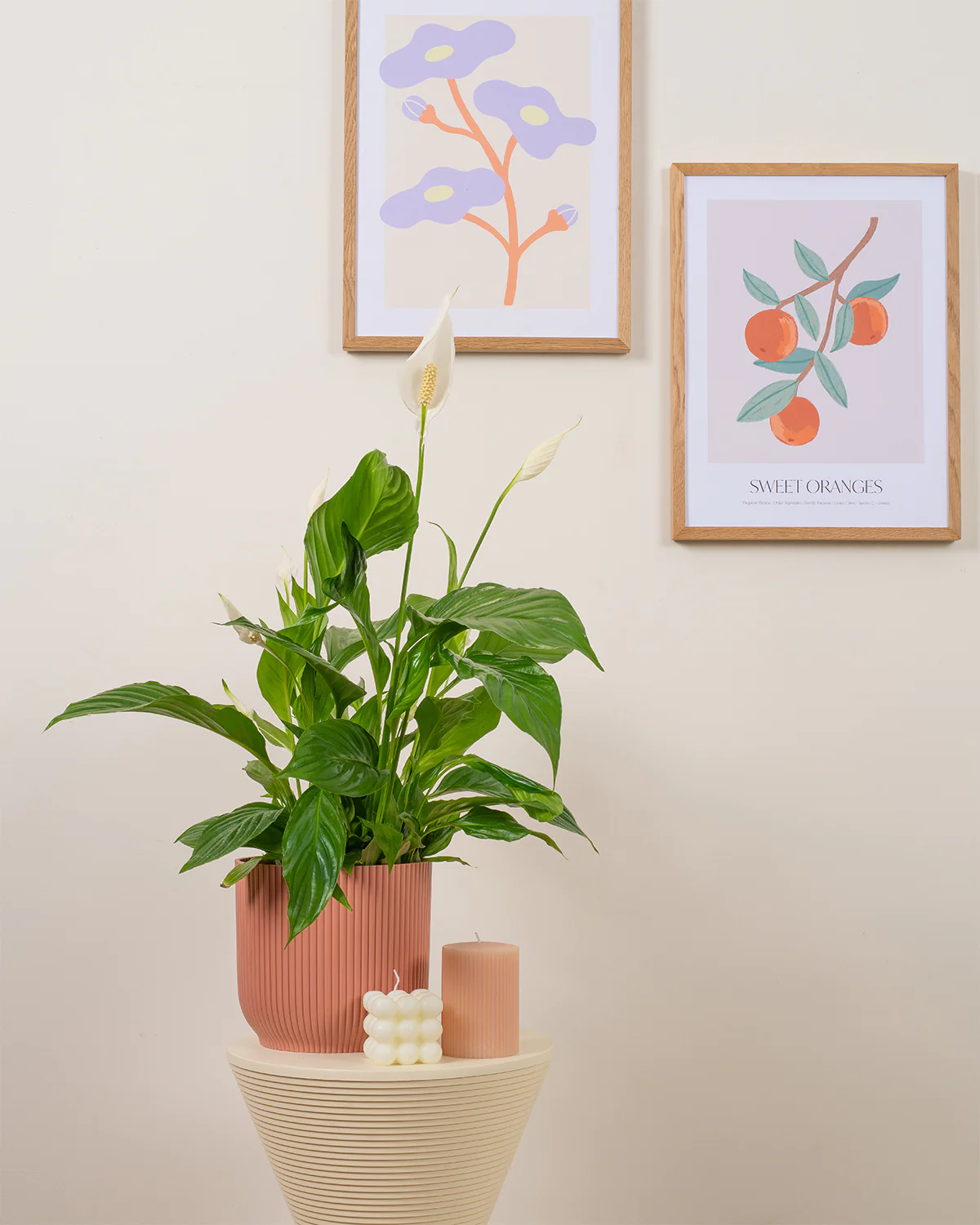
As for feeding, easy does it. Low-light plants grow slowly, so they don’t need much food. I only fertilize during spring and summer, using a standard liquid fertilizer diluted to half-strength just once a month. Don’t fertilize at all in the fall and winter.
Oh yeah, and the pot itself matters! A cheap plastic nursery pot actually holds moisture longer, which can be a good thing for a thirsty Boston Fern. But for a Pothos or ZZ that hates wet feet, a classic terracotta pot is your best friend. It’s porous and breathes, helping the soil dry out much faster and preventing root rot.
Soil, Pruning, and a Quick Win
Most plants from big stores come in dense, cheap soil. I almost always repot them into a better mix. For most of these guys, a simple blend of one-part potting mix, one-part perlite, and one-part orchid bark is perfect. You can find small bags of perlite and orchid bark for about $5-$8 each at any garden center or online. This mix gives you the great drainage that prevents so many problems.
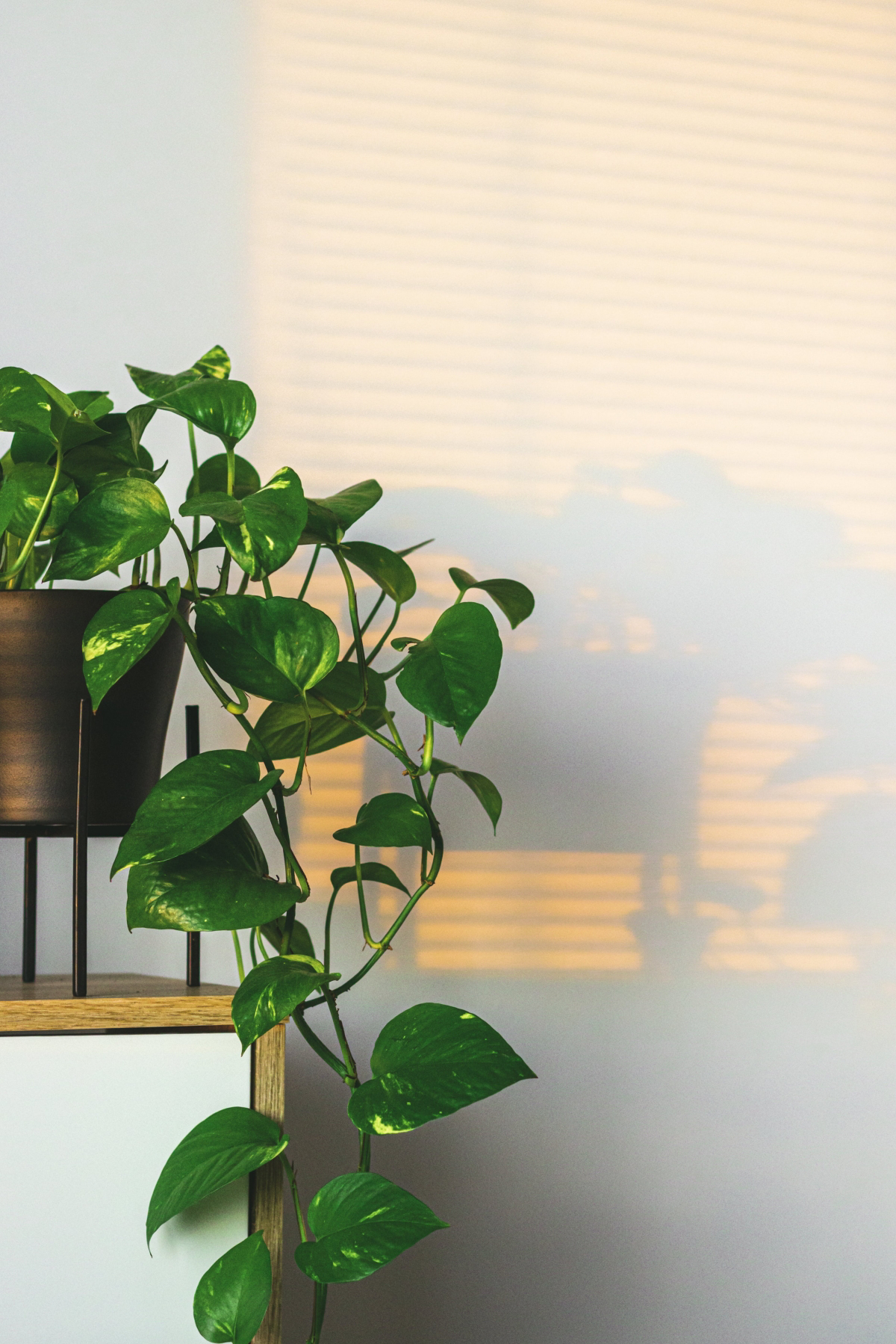
Here’s a 5-minute project you can do right now: grab a damp cloth and gently wipe the dust off your plant’s leaves. Dust blocks light, and in a dim room, every little bit counts. It’s like cleaning your plant’s solar panels and it makes a huge difference.
What to Do When Things Go Wrong
Even with great care, you’ll hit a snag. Here’s how to read the signs.
Problem: The leaves are turning yellow.
This is almost always about water. Your first suspect is overwatering. The roots are suffocating and can’t function. Check the soil. Is it soggy? Lift the pot—does it feel super heavy? Still not sure? Use your nose. If you stick your face close to the soil and it smells musty or like a swamp, that’s a dead giveaway for root rot. Let it dry out completely. If it keeps happening, you’ll have to pull it out, trim off any brown, mushy roots, and repot in fresh soil.
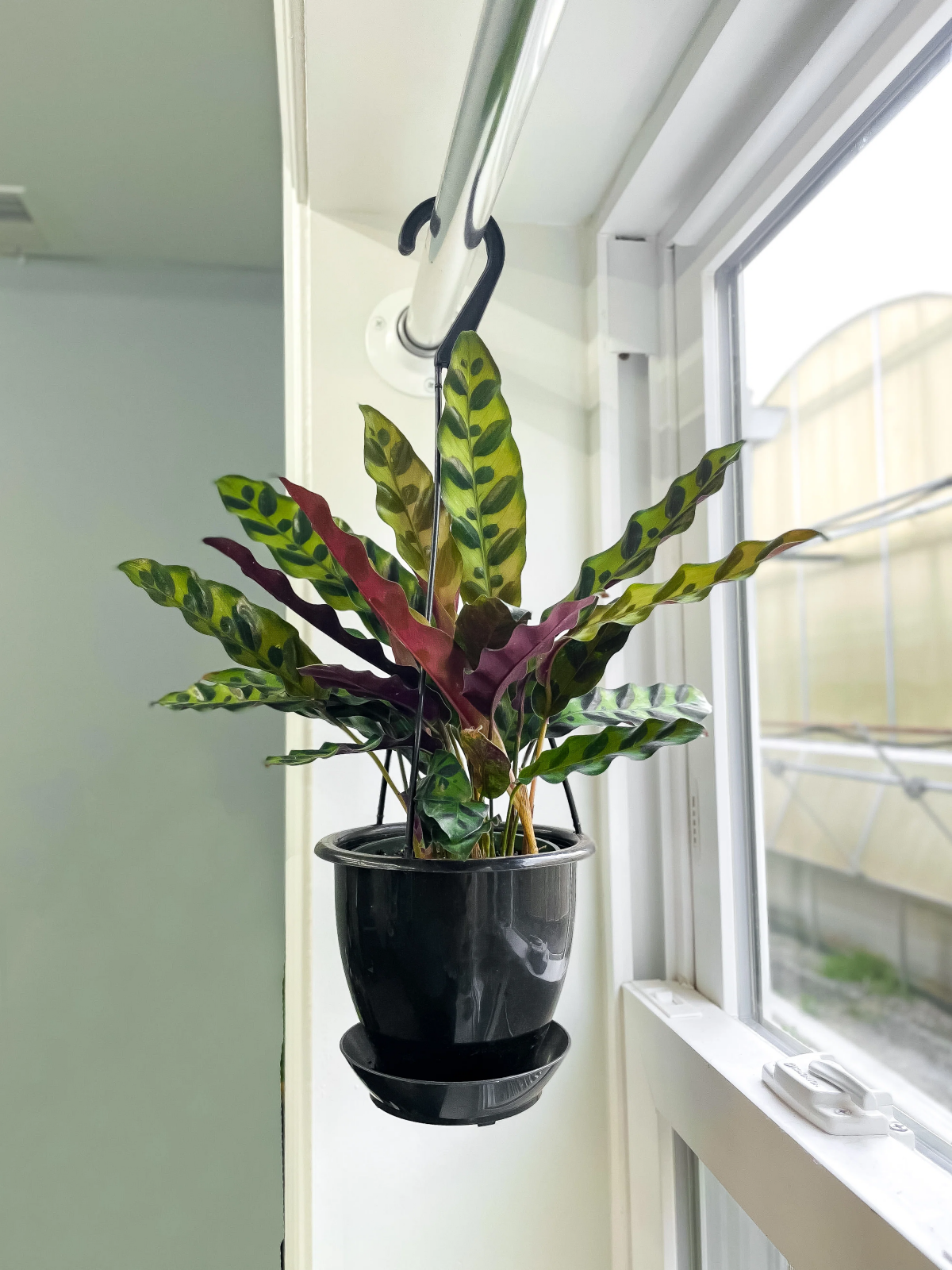
Problem: It’s getting ‘leggy’ (long, bare stems).
The plant is literally stretching to find light. The solution is two-fold. First, prune those long stems back to encourage new, bushier growth. Second, you have to fix the light problem. If you can’t move it, get a grow light. You don’t need a fancy, expensive setup. A single ‘full-spectrum LED grow bulb’—they’re about $10-$15 online—screwed into a regular desk or floor lamp is all you need. Point it at the plant for 4-6 hours a day and you’ll see a world of difference.
Problem: There are tiny bugs or weird sticky spots.
Pests happen. The best defense is a good offense. Always inspect new plants before you bring them home. If you find pests like mealybugs (little white cottony specks) or spider mites (fine webbing under the leaves), act fast. A strong spray of water can knock them off. For a bigger problem, I use insecticidal soap. It’s effective and much safer for indoor use. Follow the directions and be sure to treat the plant every 5-7 days for a few weeks to break their life cycle.
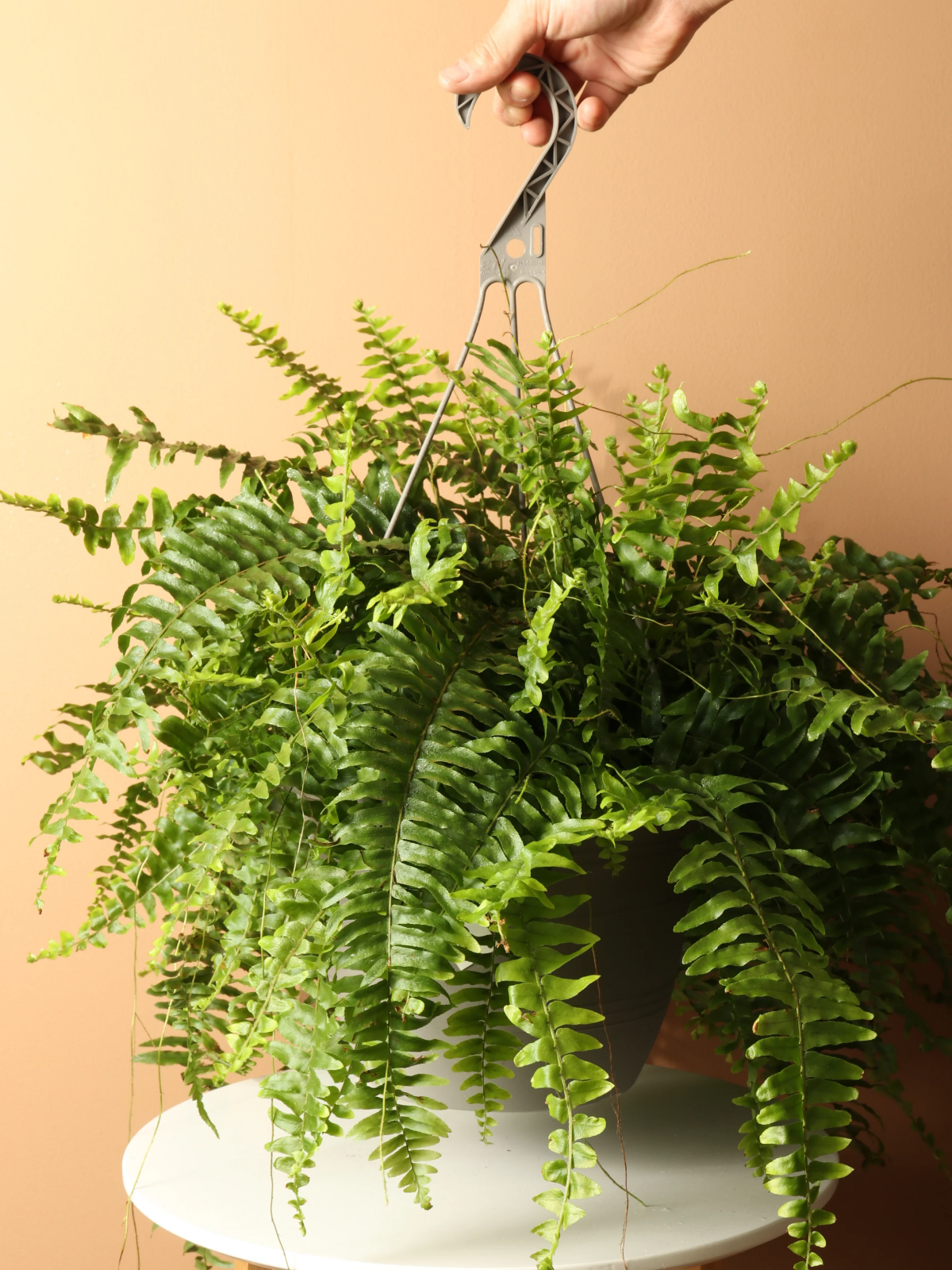
A Quick Word on Safety & Installation
Please don’t skip this part. A hanging plant with wet soil is surprisingly heavy—a 10-inch pot can easily weigh 20 pounds or more. A simple hook screwed into plain drywall will not hold it. I’ve seen them come crashing down.
You must anchor the hook into a wooden ceiling joist. Use a stud finder to locate one. If there’s no joist in the perfect spot, go to the hardware store and get a proper toggle bolt or a snap-toggle anchor rated for at least 50 pounds. They cost a few bucks and will save you a world of pain and a giant mess.
Finally, remember that some of the hardiest plants (Pothos, Philodendron, ZZ Plant) are toxic to pets. Always double-check a plant’s toxicity before bringing it home if you have curious pets or kids. Even if it’s hung high, leaves can fall. Better safe than sorry.

Bringing green into a dark space is so rewarding. It’s not about magic; it’s just about a little bit of knowledge and choosing the right partner for that shady corner. You can absolutely do this.
Galerie d’inspiration
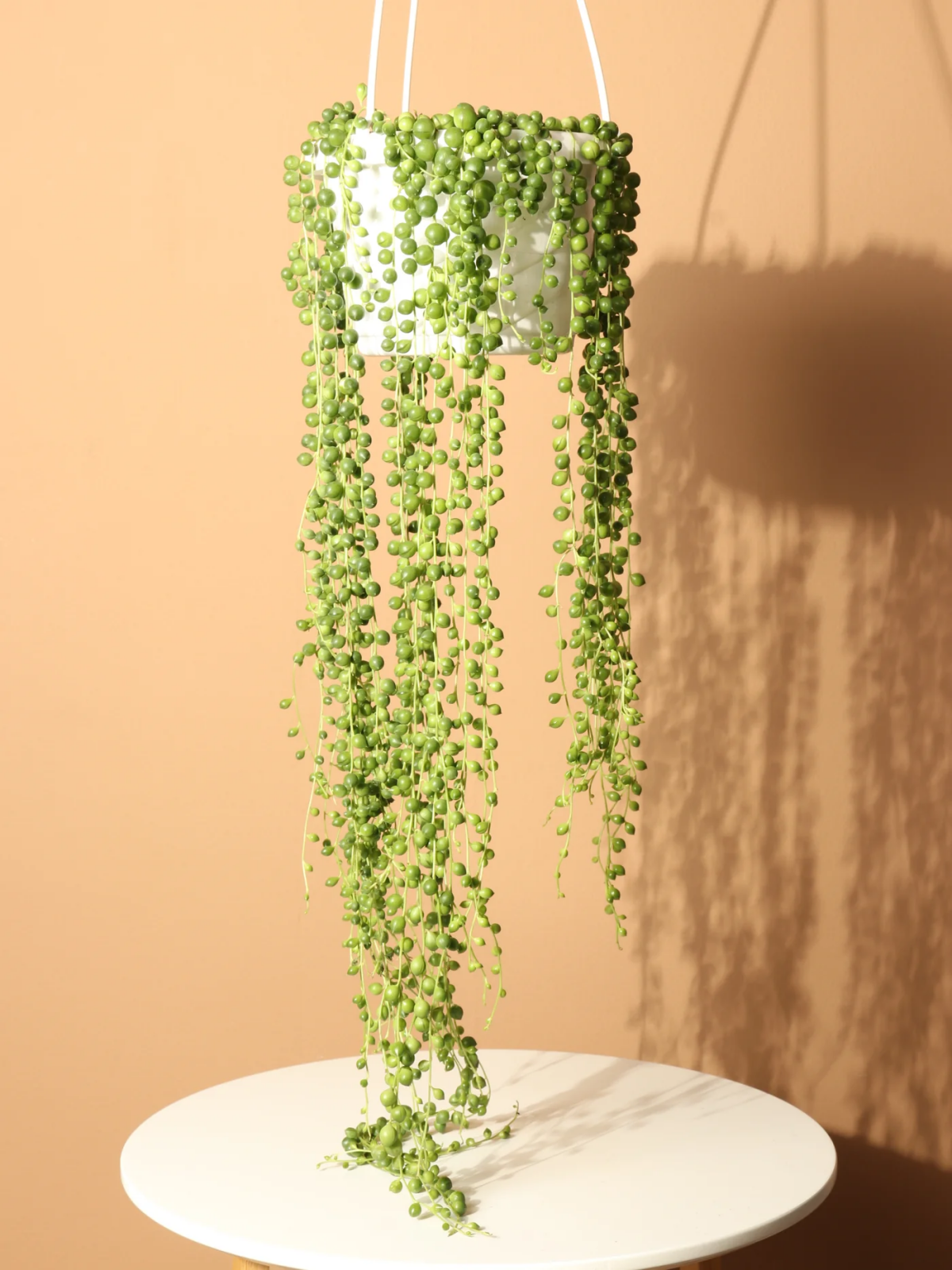
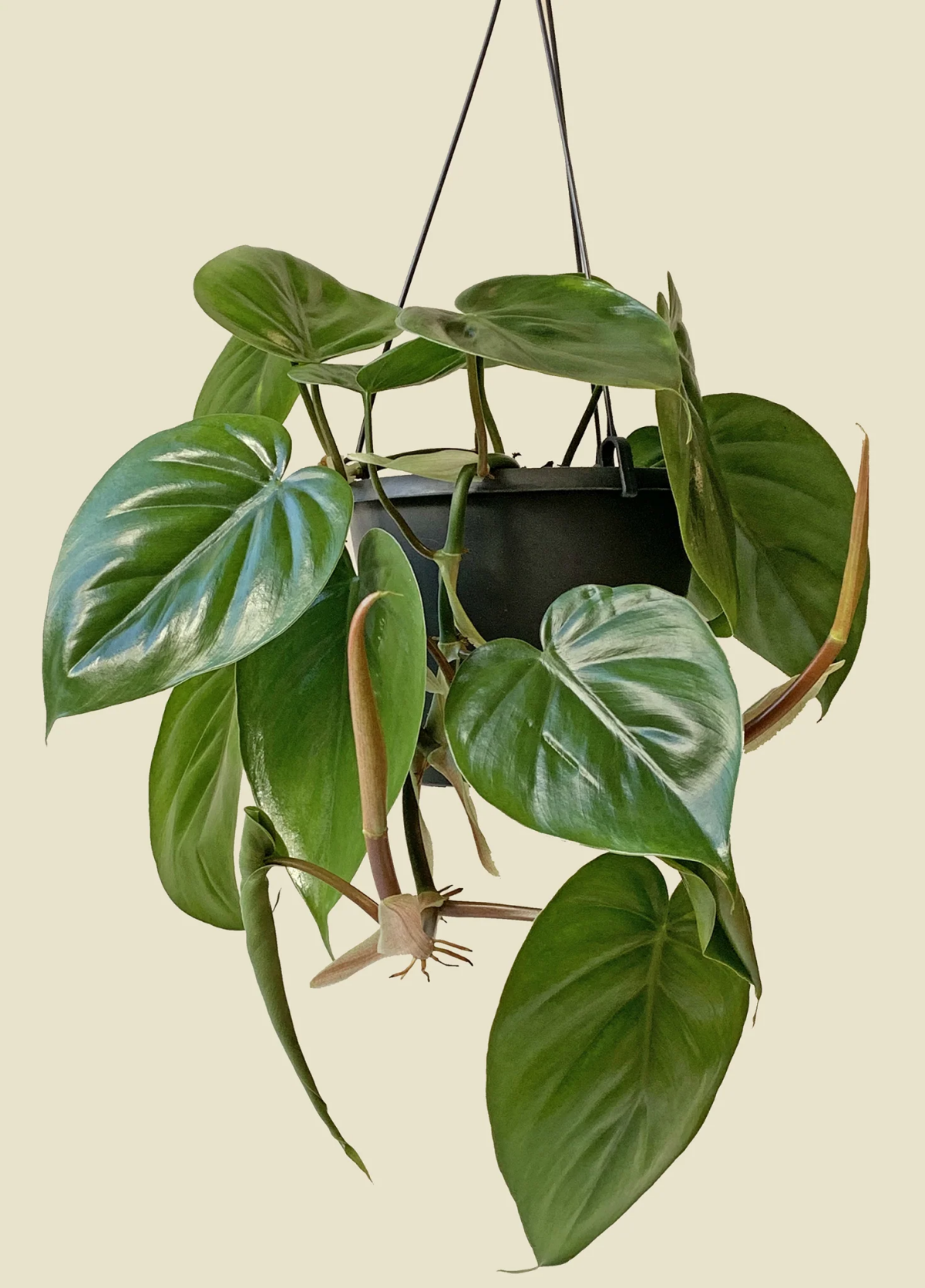
The secret to lushness: Don’t just hang one plant. Create a living curtain by grouping two or three. Combine a fast-growing Golden Pothos with the delicate, dark green leaves of a Heartleaf Philodendron. Hang them at slightly different heights to create depth and a true corner-to-jungle transformation.
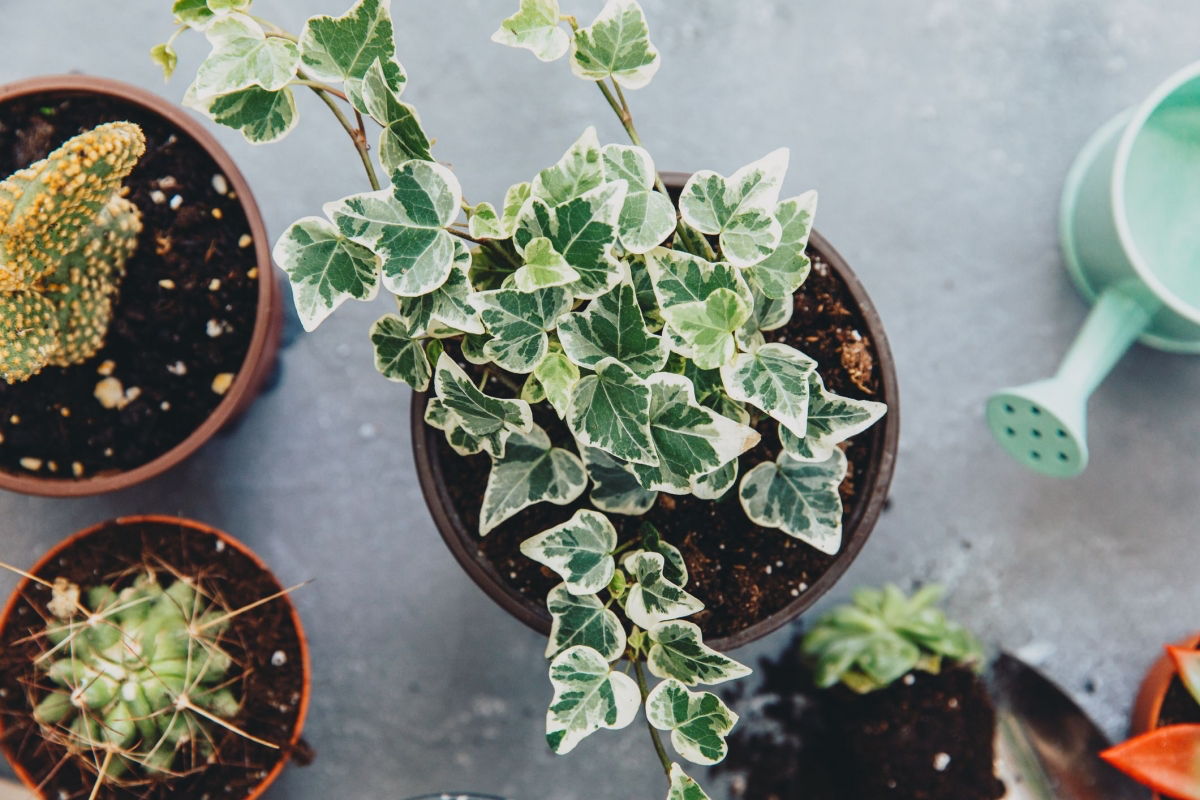
A NASA Clean Air Study revealed that common houseplants can remove up to 87% of volatile organic compounds (VOCs) from indoor air within 24 hours.
While all plants help, vining heroes like the Pothos are particularly effective due to their large leaf surface area. Hanging one in your bedroom or office isn’t just a design choice; it’s a small act of air purification, working silently in that dim corner.
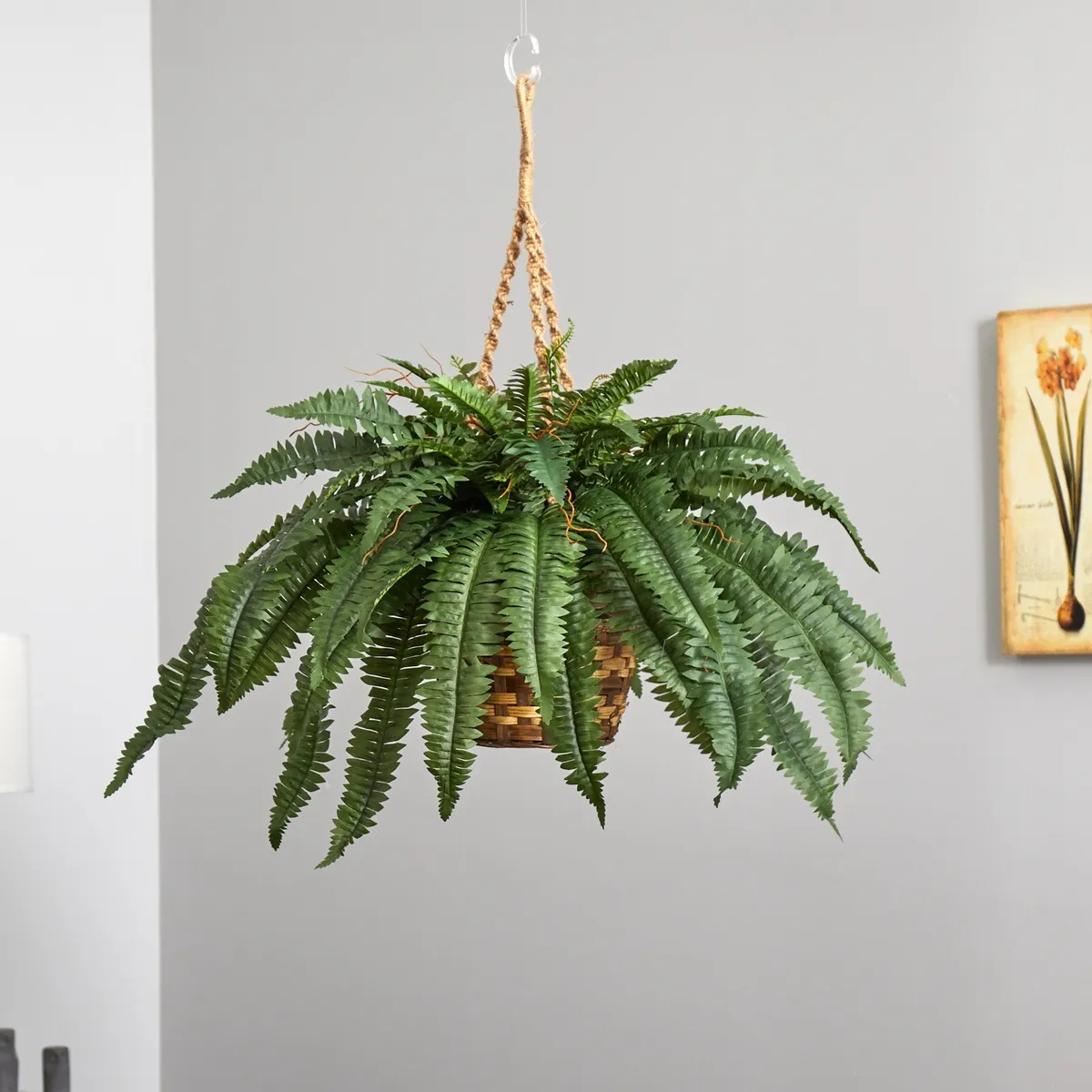
My hanging plant’s leaves are turning yellow! Am I a plant killer?
Almost certainly not! In low-light spots, yellowing leaves are the classic sign of overwatering, not under-watering. Because the plant is photosynthesizing less, it uses water much more slowly. Before you water, stick your finger two inches into the soil. If you feel any moisture, wait a few more days. It’s better to be a little too dry than a little too wet.
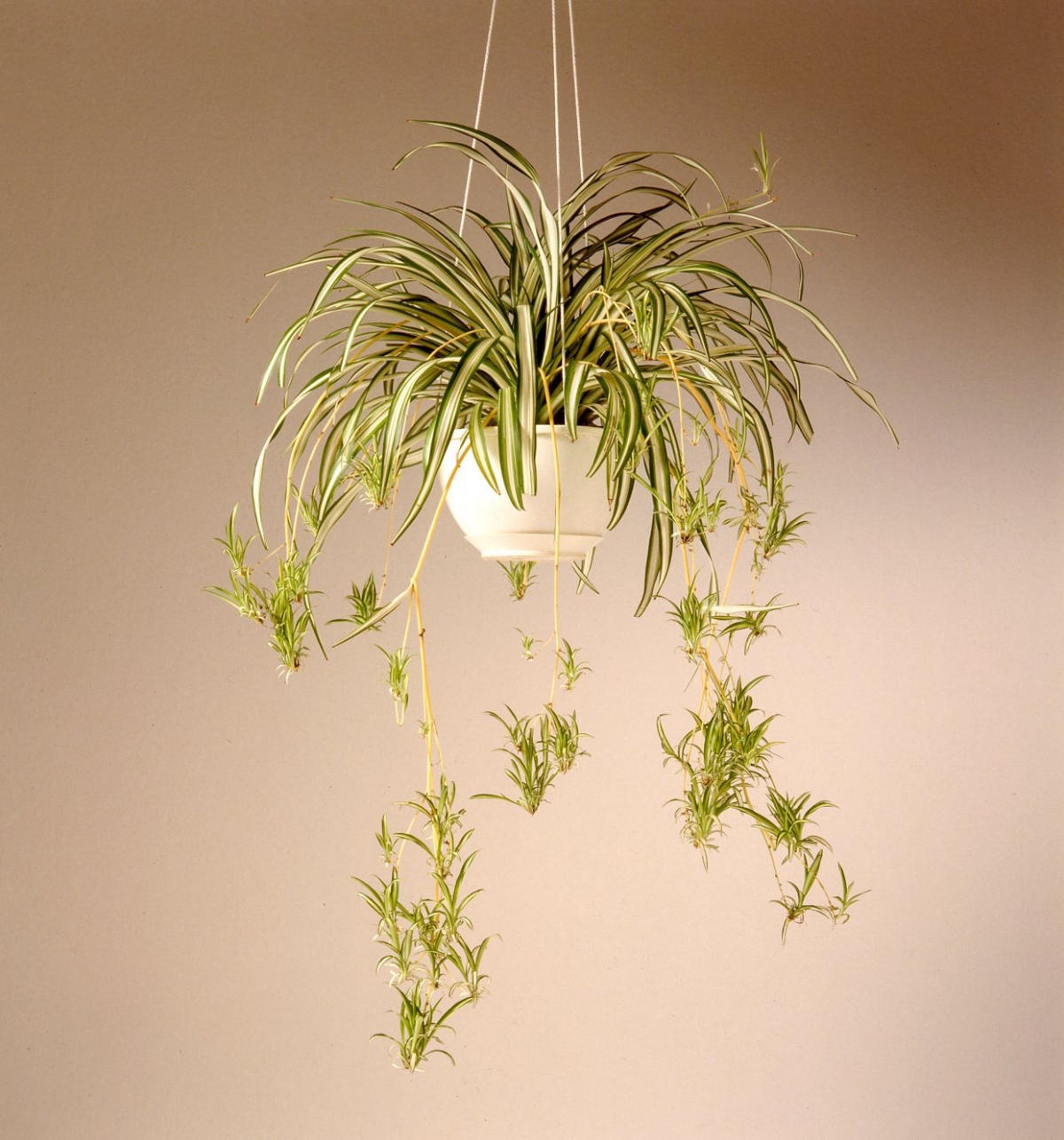
- Less frequent watering.
- No more guesswork.
- Healthier roots and fewer fungus gnats.
The trick? A self-watering hanging pot. Brands like Lechuza make stylish options, but many affordable versions exist. A built-in reservoir allows the plant to draw water as needed, mimicking nature and preventing the dreaded root rot that plagues so many low-light plants.
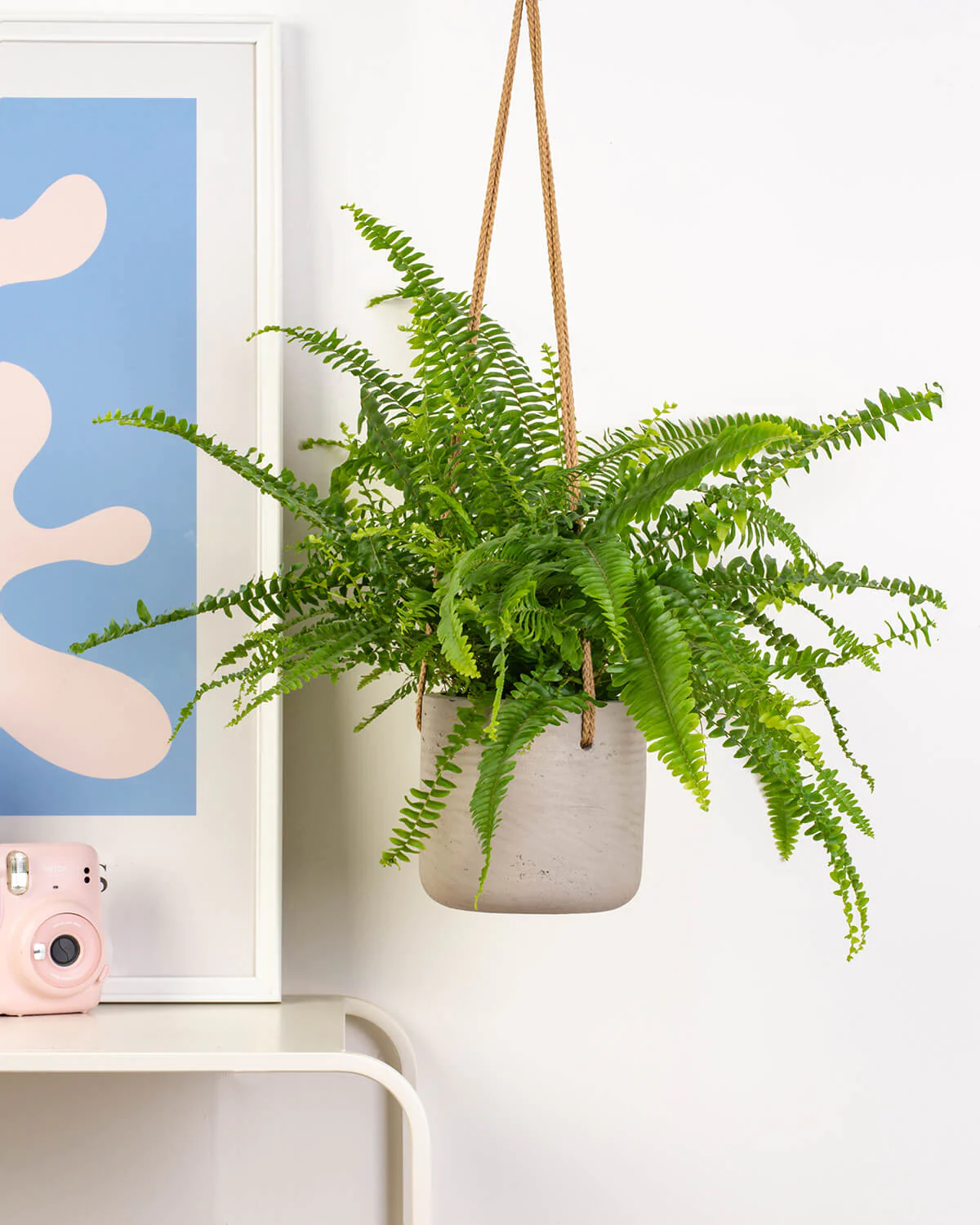
Macrame Hanger: The bohemian classic. Its woven texture adds warmth and a soft, handcrafted feel. Perfect for creating a relaxed, 1970s-inspired vibe. Allows for excellent air circulation around the pot.
Leather/Metal Hanger: Sleek and modern. These offer clean lines and a more structured, minimalist look. They are a fantastic choice for contemporary or industrial-style interiors where you want the plant to pop without a fussy holder.
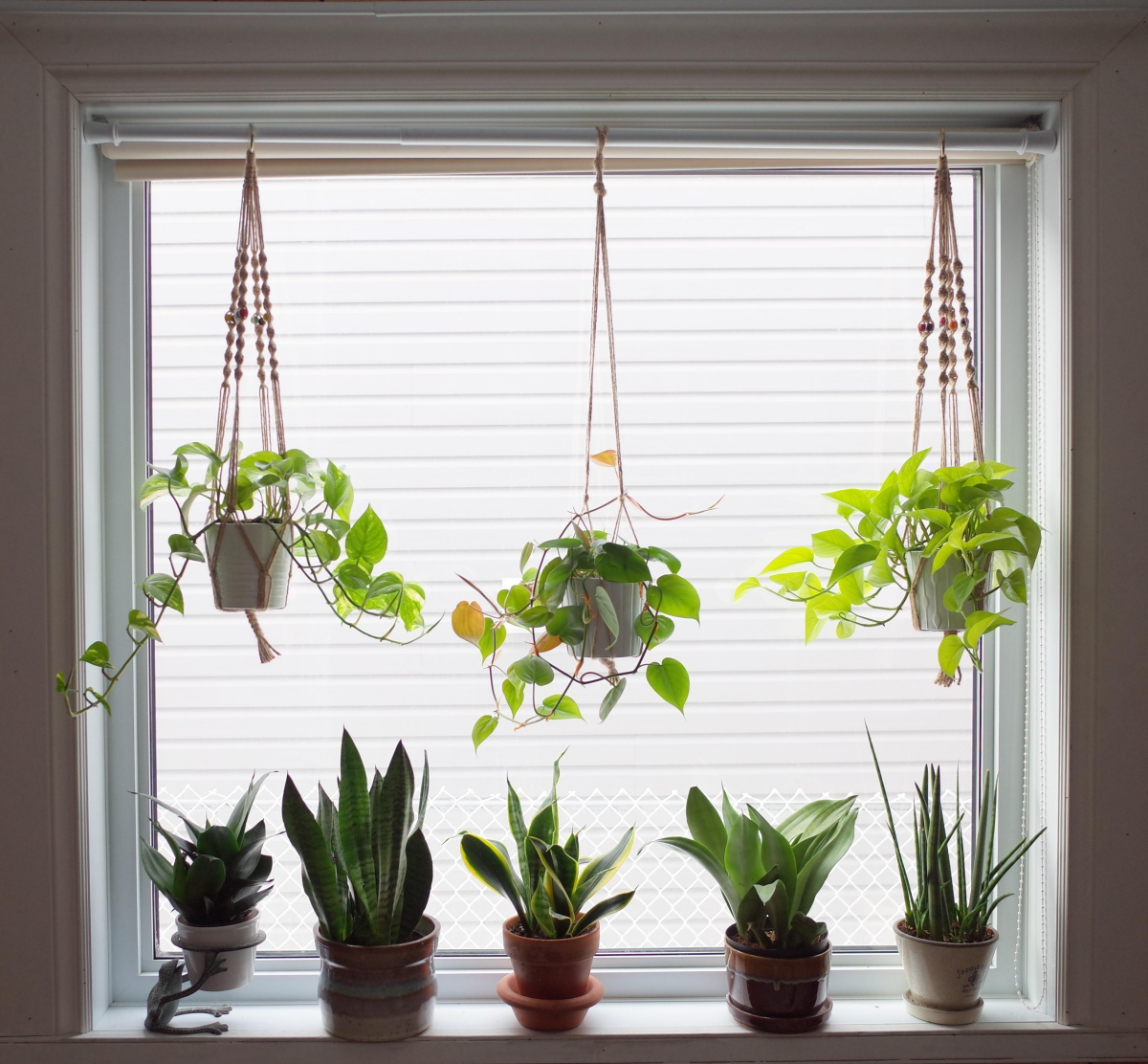
Think beyond the plastic pot. For a truly unique and organic look, consider a Kokedama. This Japanese art form involves binding a plant’s roots in a ball of moss-covered soil. You can hang these ‘moss balls’ with simple string. A Bird’s Nest Fern or a compact Philodendron makes a stunning Kokedama, turning your plant into a suspended piece of living sculpture.
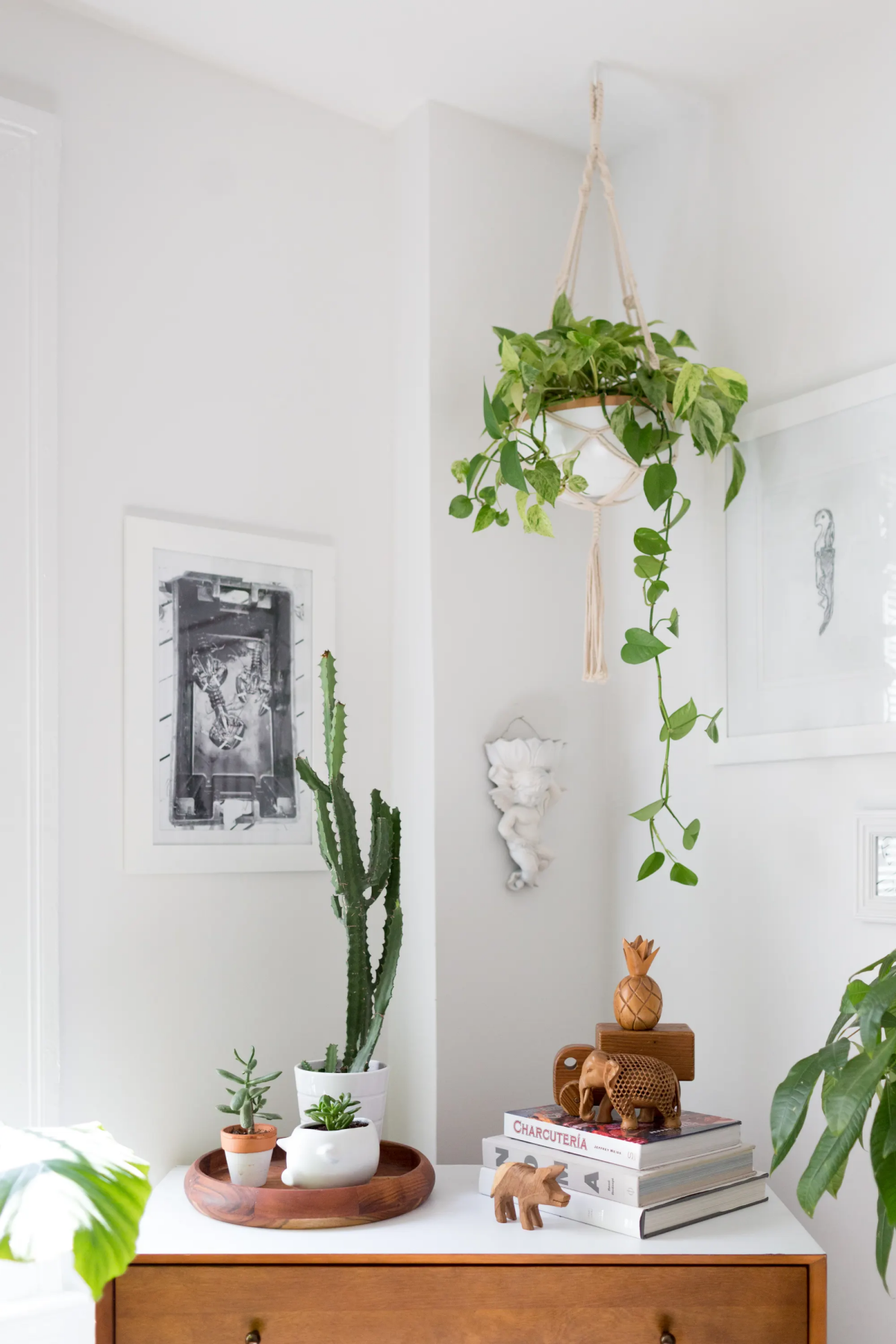
Your bathroom might be the best room in the house for a low-light hanging plant.
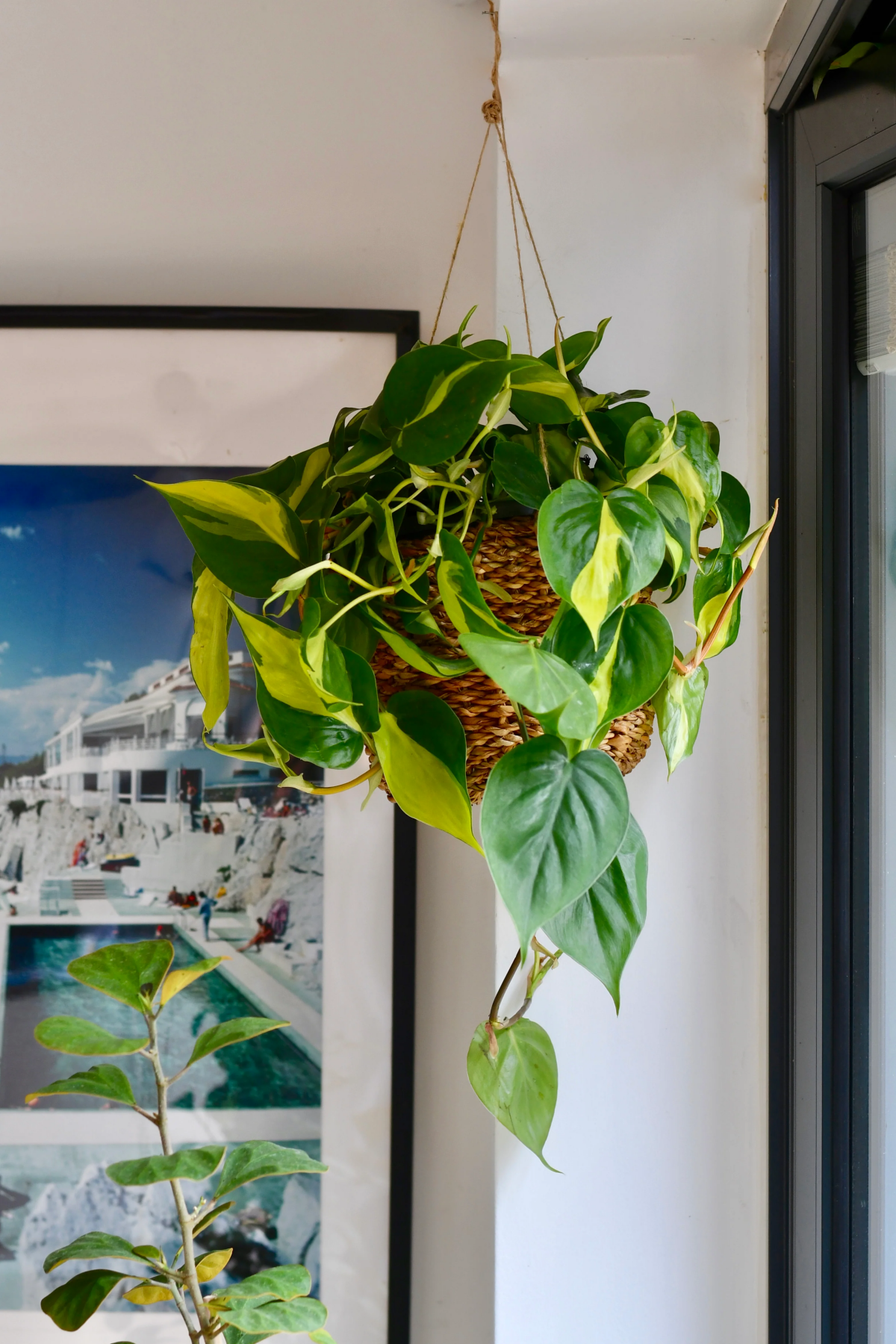
Important: Check your hooks! A pot filled with moist soil is surprisingly heavy. A simple stick-on hook is a recipe for disaster. Always use a hook screwed securely into a ceiling joist or, if that’s not possible, a robust toggle-bolt anchor designed for drywall. It’s a five-minute job that prevents a heartbreaking crash.
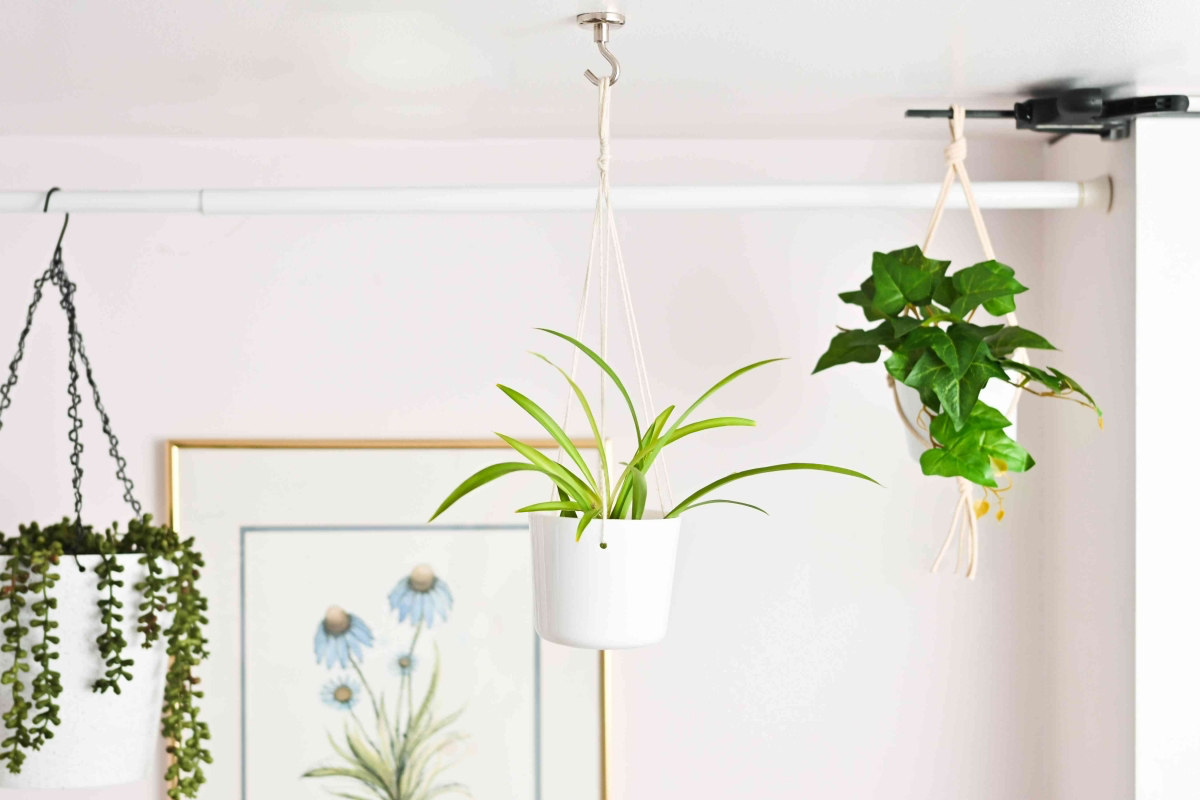
The soil mix is more important than you think, especially when a plant can’t rely on bright light to help dry it out. For your hanging pots, create a lighter, airier mix. A great DIY recipe for low-light plants is:
- 60% standard potting soil
- 20% perlite (for aeration)
- 20% orchid bark (for drainage and structure)
This blend helps prevent the soil from becoming a dense, waterlogged brick—the number one enemy of happy roots.
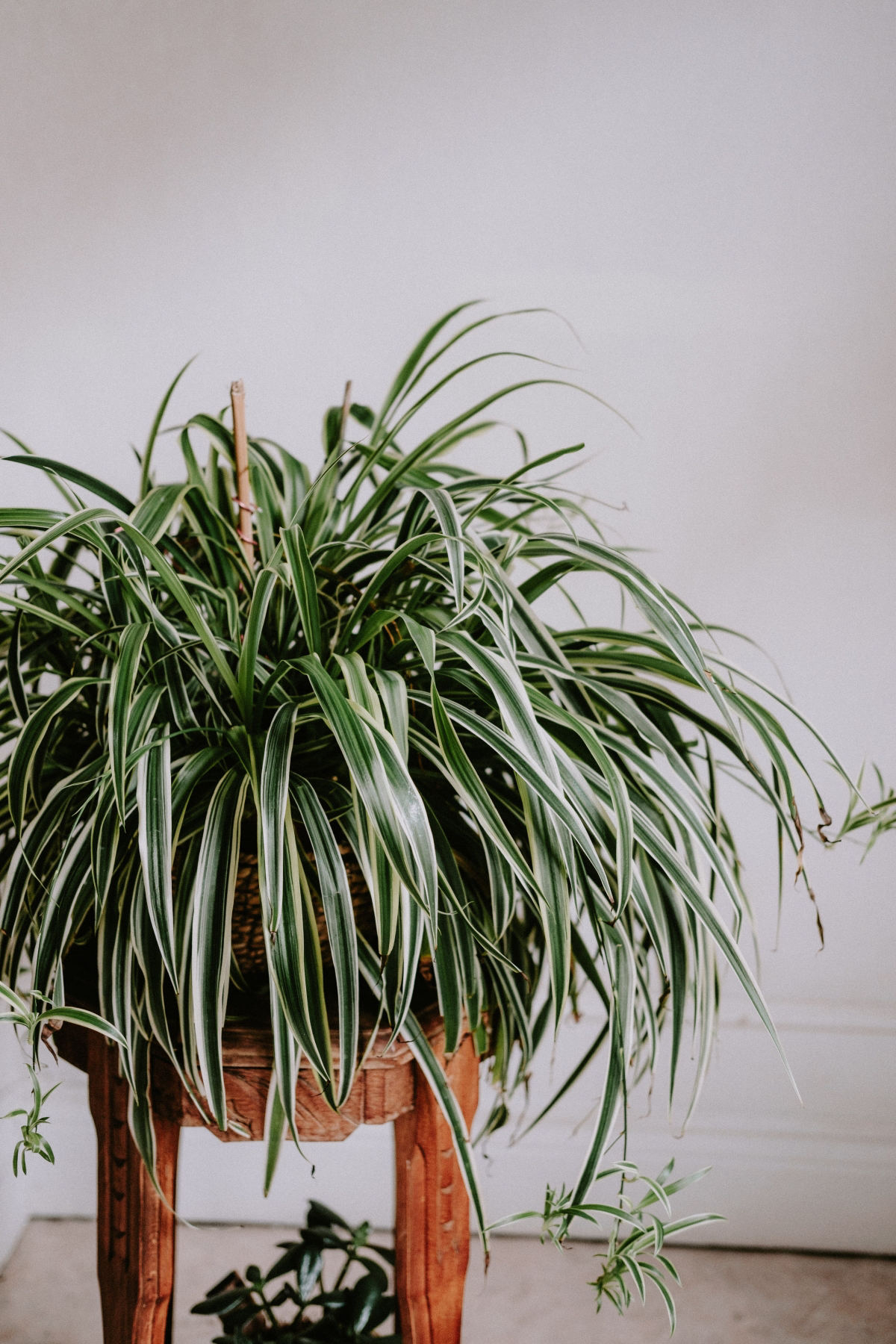
Give your hanging plant a quarterly ‘spa day.’ Once every three months, take it down and give it a gentle shower in the tub. This does more than just water it; it cleans dust off the leaves, which can block precious light, and helps flush out any mineral buildup in the soil. Let it drain completely before hanging it back up.
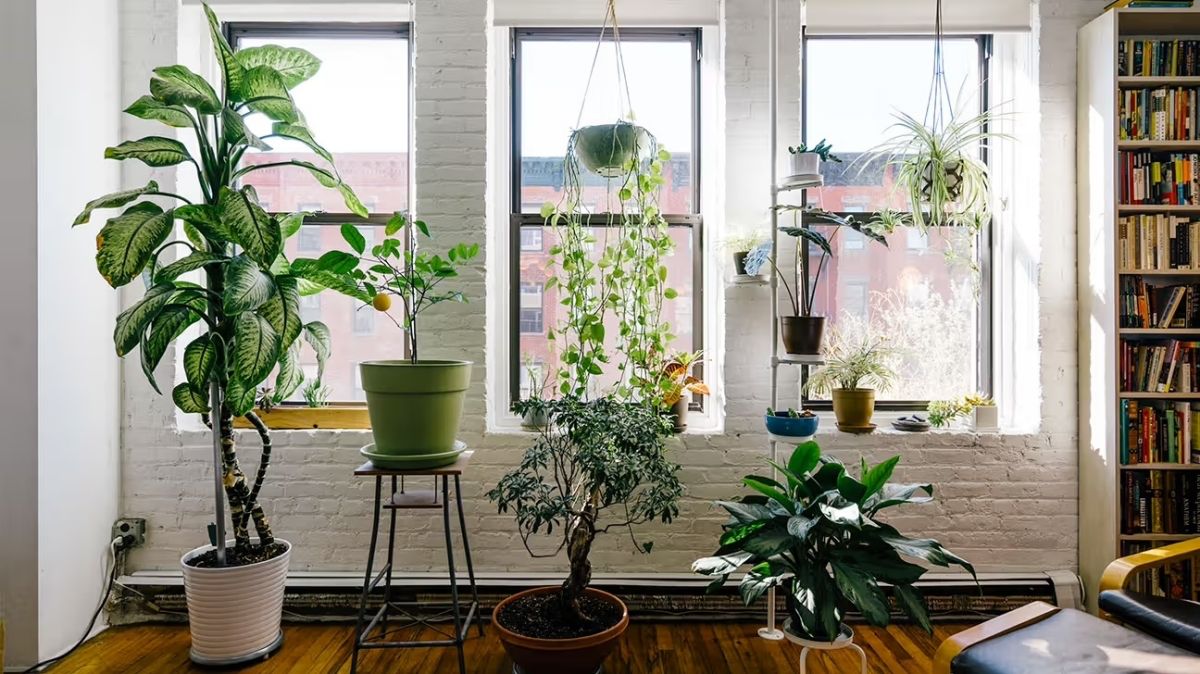
Can I get that long, trailing look on a budget?
Absolutely. Instead of splurging on a large, mature hanging basket, buy a small, inexpensive 4-inch potted Pothos or Philodendron. These plants are vigorous growers. With a bit of patience, regular care, and a simple hanging planter, that tiny plant will produce impressive vines within a single growing season, saving you significant money.
- Use a pulley system for effortless raising and lowering.
- Place a few ice cubes on the soil for a slow, drip-feed watering.
- Rotate the pot 90 degrees each time you water to ensure all sides get some ambient light.










